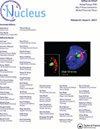PLANTAS DE COBERTURA EM SISTEMA AGROFLORESTAL ORGÂNICO NO NOROESTE PAULISTA
IF 4.5
3区 生物学
Q3 CELL BIOLOGY
引用次数: 0
Abstract
The experiment was developed at Estância Esperança, in Jales, northwest of São Paulo. The agroforestry system was composed of 5 species: pineapple, banana, papaya, pink pepper and Bixa orellana L., cultivated in an organic system. 5 treatments were used: 4 cover crops and 1 standard treatment (without cover crop): T1: Standard treatment; T2: U. Ruziziensis; T3: M. maximus (Syn. P. maximum) cv. Mombasa; T4: C. Juncea; T5: C. cajan. The experimental design used in randomized blocks with 4 repetitions. The total area of the experiment was 1.8 ha. Dry matter yield and nutrient absorption by cover crops and standard treatment and changes in soil chemical attributes were evaluated. The results were subjected to variance analysis and the averages compared by the Tukey test (p <0.05). Because it has the highest dry matter yield and, consequently, higher nutrient accumulation between cover crops and by reducing the soil Al content, M. Maximus cv. Mombasa proved to be an interesting option to be used as a cover crop in an organic agroforestry system in the northwest of São Paulo.sao保罗州西北部有机农林复合系统的覆盖植物
这项实验是在圣保罗西北部的Jales的estncia esperana进行的。该农林业系统由菠萝、香蕉、木瓜、粉椒和Bixa orellana L. 5种植物组成,在一个有机系统中种植。5个处理:4个覆盖作物和1个标准处理(不覆盖作物):T1:标准处理;T2: Ruziziensis;T3: M. maximus (Syn. P. maximum) cv。蒙巴萨;T4: C.六月;T5: C. cajan。实验设计采用随机分组,重复4次。试验总面积为1.8 ha。评价了覆盖作物的干物质产量、养分吸收和标准处理以及土壤化学属性的变化。结果进行方差分析,均数比较采用Tukey检验(p <0.05)。由于它具有最高的干物质产量,因此,覆盖作物之间的养分积累更高,并通过降低土壤铝含量,M. Maximus cv。蒙巴萨被证明是一个有趣的选择,可以用作圣保罗西北部有机农林业系统的覆盖作物。
本文章由计算机程序翻译,如有差异,请以英文原文为准。
求助全文
约1分钟内获得全文
求助全文
来源期刊

Nucleus
CELL BIOLOGY-
CiteScore
5.60
自引率
5.40%
发文量
16
审稿时长
13 weeks
期刊介绍:
Nucleus is a fully open access peer-reviewed journal. All articles will (if accepted) be available for anyone to read anywhere, at any time immediately on publication.
Aims & Scope: The eukaryotic cell nucleus is more than a storage organelle for genomic DNA. It is involved in critical steps of cell signaling and gene regulation, as well as the maintenance of genome stability, including DNA replication and DNA damage repair. These activities heavily depend on the spatial and temporal “functional” organization of the nucleus and its integration into the complex meshwork of cellular scaffolding.
Nucleus provides a platform for presenting and discussing cutting-edge research on all aspects of biology of the cell nucleus. It brings together a multidisciplinary community of scientists working in the areas of:
• Nuclear structure and dynamics
• Subnuclear organelles
• Chromatin organization
• Nuclear transport
• DNA replication and DNA damage repair
• Gene expression and RNA processing
• Nucleus in signaling and development
Nucleus offers a variety of paper formats including:
• Original Research articles
• Short Reports
• Reviews
• Commentaries
• Extra Views
• Methods manuscripts.
 求助内容:
求助内容: 应助结果提醒方式:
应助结果提醒方式:


